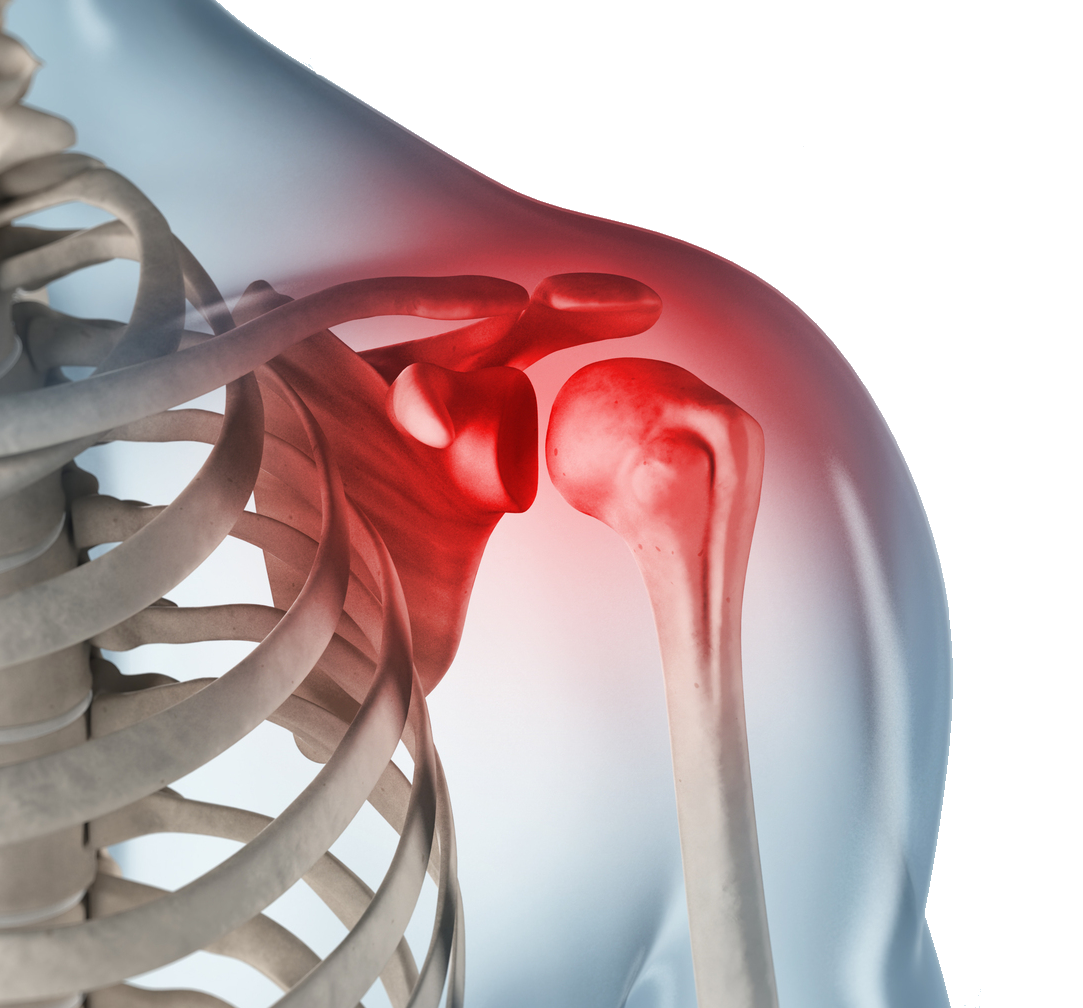Frozen shoulder

A frozen shoulder is also known as adhesive capsulitis or intrinsic capsular stiffness. The latter term is preferred by some as the pathology is not one primarily of inflammation. Usually the shoulder capsule is loose to allow a large range of movement. In a frozen shoulder the capsule thickens and contracts making movement difficult. This stiffening of the shoulder may or may not be associated with pain.
Frozen shoulder is referred to as primary if no identifiable cause is evident, or secondary if it results from trauma or immobility of the shoulder. Overall, it tends to be more severe in patients with diabetes.
While it is uncertain what causes a primary frozen shoulder we do know that there are various factors which put people at increased risk both of getting it but also in the severity if they do get it. Diabetes, a previous frozen shoulder on the other side, Dupuytrens disease, and plantar fibrosis are all risk factors.
A secondary frozen shoulder can occur following immobilisation of the shoulder after surgery, or following trauma to the shoulder even if this is only minor trauma.
The main symptoms of a frozen shoulder are pain and loss of movement. Typically the shoulder becomes painful and then stiffens, it goes through a period where the pain subsides but the shoulder remains stiff, and then finally the shoulder tends to loosen up.
Because the glenohumeral (ball and socket) joint is stiff, the muscles in the neck and upper back are put under greater strain and so it is common to experience pain in these areas as well. Pain is often particularly troublesome at night.
There are a number of options for managing a frozen shoulder. Some will improve with time and anti-inflammatory painkillers, but a steroid injection can be helpful. Physiotherapy can also help, although it is important not to aggravate the shoulder as this may exacerbate matters.
Hydrodilatation, which is usually performed by a radiologist (radiology doctor), may be advised. This is a process whereby fluid and local anaesthetic is injected into the shoulder under pressure so that the tight shoulder capsule expands and then ruptures, improving the movement of the shoulder.
Surgery can be performed where a more rapid return to function is desired, and in those cases resistant to non-surgical management. Surgery may constitute a manipulation under anaesthetic, whereby the shoulder is moved to break down the stiff tissues while you are asleep. Alternatively, an arthroscopic assessment of the inside of the shoulder may be performed as well as a release of the stiff tissues of the shoulder. This is often combined with a more gentle manipulation to break down any final stiff tissues.
After surgery it is important to get the shoulder moving straight away. Unfortunately the shoulder will be sore but it is important to understand that you will not be damaging the shoulder by pushing through the pain. The quicker you get it moving the better the range of movement will be. Your physiotherapy team will be able to give you more specific guidance on your exercises.
Without surgery the majority of patients regain their movement and their pain settles however this can take around 2 years. With surgery, the movement is regained at the time of surgery but physiotherapy is required to maintain this gain. The pain from surgery tends to settle quite quickly.